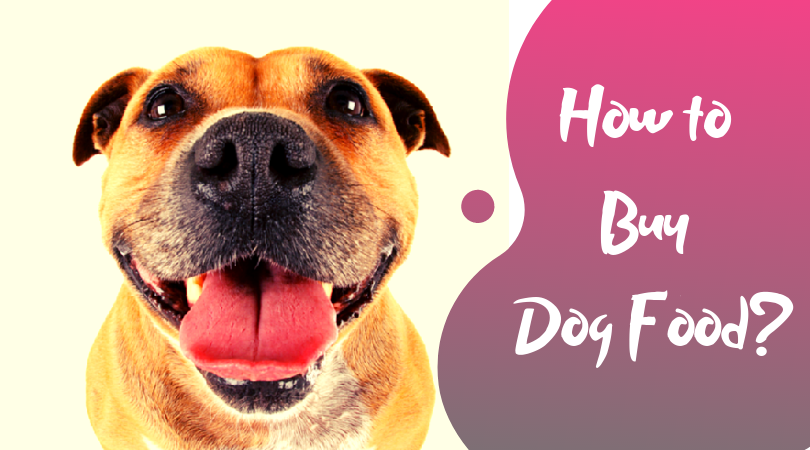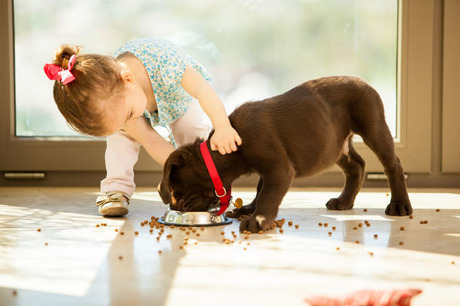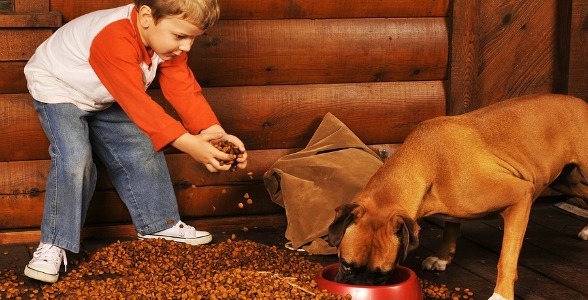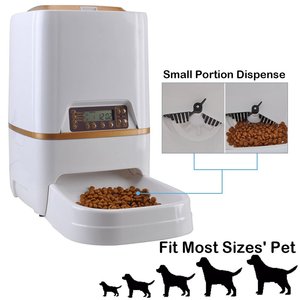How to buy dog food is a real challenging project when you go to the store and notice how many different brands are on the shelf to choose from.
There are different flavors, many size selections, a variety of price ranges and of course there is a high difference in the ingredients from each manufacturer.
So lets see how much you know about whether your dog has problems with the food they eat or not!
These are not temporary problems but I will provide permanent solutions to allowing your dog a longer life cycle.

What health issues do your dog(s) have?
I usually start with asking six questions when trying to determine which dog food would be the right one for the dog in question.
- Does your dog have hot spots?
- Does your dog have dry skin?
- Does your dog have excessive loss of hair?
- Does your dog have ear infections?
- Does your dog lick himself/herself excessively?
- Does your dog itch himself/herself excessively?
It’s amazing how many people answer yes to at least one of these questions.
Most people don’t understand or know that if you answered yes to any (normally more than on) of these questions, then your dog may be having an allergic reaction to the dog food they are eating.
Does Your Dog Have Allergies and How to Get Rid Of Them
Understanding your dog has a problem is of course the first step to feeding them better dog food.
More than 80% of all dogs in the world have had allergic reactions to dog food at one time or another in their live’s.
You can go to the vet’s office and they can give the dog a shot of prednisone and the symptoms will go away for a month or so, then the issues come back.
Not to mention your’re out $300 for the vet’s visit and they schedule you for another visit in one month because they know that the effects of the shot will wear off around that time.
For the dogs that have any of the symptoms from the above questions, I would say your dog has food allergies and to change your dog’s food and/or regular diet.
We are what we eat and the same is true for your dog.
Dog Allergy Solutions
- Take all grains completely out of the diet.
- Take all chicken out of the diet (what do chickens eat?)
- Remove all treats from their diet that has any grains or chicken.
- Never buy outdated products. Always check expiration dates.
- Always read the ingredients on bags of dog food before purchasing.
Recommended Dog Foods
There are some very good dog foods on the market. Here is my top four list of good dog foods;
1) Orijen
2) Taste of the Wild
3) Nature’s Variety
4) Natural Balance
Please keep in mind, if your dog has allergies then this could be a permanent solution to their problem.

Tips to Choosing the Best Dog Food for Your Best Friend
We all love our dogs.
They’re our best friends and we want to make sure that they remain healthy and strong.
We understand that with all the available brands and types of dog food on the market today, it can be challenging to pick the right kind of dog food.
How to Choose the Best Dog Food
Consider your dog’s age and breed
Different dogs have different needs and food requirements.
You should take the time to research on a particular kind of food so as to determine its overall effect on your dog.
Consider your dog’s situation
Does your dog have any particular problem?
If your dog has coat problems, for example, make sure that you get the type of food that will not aggravate the condition even more.
Dog food with medication
If your dog is obese, has diarrhea problem or even cancer, there are certain recommendable dog food types on the market that will help in easing the condition.
Check out the ingredients
Read the product labels carefully.
As much as possible, get those types of dog food that have natural ingredients. Avoid chemical ingredients as these can cause a lot of diseases including cancer.
Get meat-based dog food
As dogs are carnivorous in nature, meat will benefit them.
Look for lamb, chicken, beef and fish based types of dog food.
Rice ingredient is a good addition too as this is a natural source of protein.
Get vitamin-fortified dog food
Most dog food packs nowadays are fortified with vitamins and minerals.
Those with vitamins E and C and calcium are particularly good.
Dry, wet or canned dog food
All these types of dog food have different benefits.
Canned types of food are recommendable for dogs who are constantly constipated.
Wet dog food types are good for hydration purposes as some dogs are not drinking as much water as they need to.
And dry dog food types are not only convenient but they are inexpensive and nutritious too.
Always keep these best dog food tips in mind when looking out to buy food products for your dogs.
Avoid Preservatives
The side effects of food preservatives can lead to certain diseases and even early death.
You should avoid dog foods that have these ingredients: Ethoxyquin, Propyl Gallate, BHT and BHA.
Avoid ingredients that can cause allergies
Some dogs are sensitive to wheat, soy and corn. So take some precaution when purchasing dog food brands that contain said ingredients.
Buy only from trusted and reputable pet food manufacturers
Reputable dog food companies have high quality control standards.
Moreover, they are well-equipped with machines and resources to conduct effective scientific research in the production of their dog food supplies.
We hope that those tips will be of help to you when choosing the best dog food for your pet.
As we all want our beloved dogs to be with us for a very long time, we should exert all efforts to keep them healthy and safe.
Aside from providing your best friend with the best dog food available on the market, you should also visit the vet regularly for check ups.

Exploring Dog Food Varieties
Is your dog overweight?
Have food allergies?
Considering high protein dog food?
Compare dog foods, so you can feed kibble that meets your dog’s needs!
Pet owners spend more money on their pets today than ever before.
The pet food industry is not oblivious to this spending spree and has adapted to the high demand.
There is now a variety of dog food for almost every stage of a dog’s life.
Just browse around a pet food store and you’ll immediately notice the shelves are stocked with more than just adult and puppy foods.
This variety of dog foods is great news for owners who have dogs with dietary requirements or limitations.
Hypoallergenic (Limited Ingredient) Dog Food
Hypoallergenic Dog Food is perfect for a dog with a food intolerance or food allergy.
Limited ingredient foods typically have one protein source (one meat) and one carbohydrate source (rice or potatoes).
Besides these two ingredients, you will see oils, preservatives, vitamins and minerals.
This type of food is ideal for a dog with a sensitive stomach.
Most dogs don’t require hypoallergenic dog food.
If your dog has a food intolerance or a food allergy then a limited ingredient diet might reduce your dog’s digestive or allergy issues.
The Difference Between A Food Intolerance And A Food Allergy
Food Intolerance:
A dog who has a food intolerance will have a poor digestive reaction to an ingredient like, vomiting, nausea gas and/or loose stool.
A food intolerance is developed from the dog’s inability to properly digest an ingredient.
This can be genetic or develop from eating the same type of food for a long period of time.
Any ingredient can cause a food intolerance, but it is typically one of the first few ingredients listed on the dog label.
This is because the first few ingredients are what make up the majority of the food.
Food Allergy:
A dog who has a food allergy will have an external reaction to the food, like rashes, itchiness, yeast infections, ear infections, eye infections, dry skin and fur, etc.
A food allergy is caused by your dog’s own immune system.
The immune system recognizes an ingredient as a threat and over stimulates itself, creating an allergic response (rashes, infections, etc).
So, every time your dog eats a food with this ingredient, he will have an allergic reaction.
High Protein Dog Food
High Protein Dog Food, whether you believe dogs are solely carnivores or omnivores, it is hard to argue that dogs need meat.
High protein foods for dogs are high in protein and low in carbohydrates.
These kibbles typically have high meat content and little to no grains.
Why is protein so important for dogs?
Protein is a dog’s source of energy and when not converted to energy it can be stored as fat.
In canines, protein is necessary for proper growth and development of puppies, adults and seniors.
If a dog is fed too much protein, some will be filtered through the kidneys and excreted in the urine.
The rest can be stored as fat.
Quality meat based high protein dog food will not cause kidney damage to a healthy dog.
If your dog has kidney disease or any other urinary health problems, then protein levels and nutrition should be discussed with your licensed veterinarian.
Low Protein Dog Food
Low Protein Dog Food, due to certain health issues like kidney failure, some dogs require a low protein diet.
Low protein dog food is generally recommended by a veterinarian to help treat canine illnesses, like Kidney Disease (Renal Failure) and Cushing’s Disease.
In addition to low protein, a low phosphorus and low sodium (salt) diet may also be recommended.
To reduce stress on the kidneys, protein should come from quality meat sources (like chicken and lamb) and not rely on plant or by-product proteins.
Read the dog food label and analysis the ingredients for protein quality.

Grain Free Dog Food
Grain Free Dog Food is dog kibble that doesn’t contain any type of grains.
They are usually high-protein and have high meat content.
Many believe that dogs are carnivores and do not need grains.
Grain free dog food can provide many benefits for dogs:
- Reduces the chance of developing a food allergy or intolerance
- Easier for their digestive system to process
- Considered a more species appropriate diet
- May contain more animal-based protein
The downside is no grain free dog food can be carbohydrate free.
It may contain fewer carbohydrates, but it needs some substance (like potatoes) to help bind the kibble together.
When switching your dog to new food, we always recommend transitioning over the course of at least 2 weeks by slowly reducing the old food and increasing the new food.
This may help reduce digestive issues.
Weight Loss Dog Food
Weight Loss Dog Food is food for overweight dogs, who need to shed a few pounds.
Many of these foods are low fat, have less calories than regular kibble and may even have lower protein levels.
An overweight dog is the result of eating too many calories and not outputting those calories into energy, so the body stores it as fat.
Basically, obese dogs eat too much food and do not get enough exercise to burn those calories.
Yes, certain breeds like labs, pugs and beagles are prone to obesity, but that is why it is even more important for their owners to monitor their dog’s weight.
Dog food diet kibbles generally have less fat, protein and calories. They also usually have more fiber.
It’s great that weight management food have less calories, but the lower fat and protein may indicate there is also less meat.
Even overweight dogs need protein rich meats to maintain energy and eat a species appropriate diet.
If you analyze weight control dog foods, you will notice many have less meat content and more carbohydrates.
Either reducing calorie intake or feeding weight control kibble, while also increasing exercise can help a dog lose weight.
Senior Dog Food
Senior Dog Food is food specially designed for your aging dog.
Some low active seniors may not require as much protein and fat as younger dogs do.
Dog owners are usually advised by their trusted veterinarians to devote special care to the diet of their aging pets.
Dogs may also benefit from food supplements containing natural compounds that promote health and wellness.
For instance, senior dog food, which is rich in compounds such as chondroitin sulphate and glucosamine may help geriatric canines suffering from joint pain.
Food supplements are especially formulated for dogs, and may prove effective in alleviating symptoms.
Choosing the right senior dog food and giving them the recommended supplement can go a long way in improving their quality of life.
Puppy Dog Food
Puppy Dog Food meets requirements for a growing and developing puppy.
Puppy foods typically have more fat and protein than adult maintenance dog foods.
Giving your puppy the best puppy food you can buy will provide your puppy with healthy, whole ingredients that are easier for your puppy’s stomach to digest.
Free from artificial fillers and animal parts that are hard to digest, the best quality puppy food manufacturers offer a variety of healthy choices and flavors to satisfy your puppy’s growing appetite.
High quality puppy food is also often fortified with essential oils and fats to enhance the health of your puppy’s skin and coat.
Many premium puppy foods are specially formulated to pack all the essential nutrition a growing puppy needs into appetizing textures, colors and aromas designed to whet your puppy’s appetite.
Many puppy food makers also offer organic and natural puppy food options for owners who want to raise their dogs naturally and free from food additives and preservatives.
Feeding your dog a healthy, wholesome, balanced diet of premium food will help you raise a happy, trustworthy dog you can spend time with and enjoy for years.
Do not skimp on the quality of food you give your puppy or adult dog.
The benefits derived from premium foods include healthy skin, coat, joints, strong immune system, and are scientifically validated and proven.
The easiest way to give your puppy a good head start in life is by serving high quality, premium puppy food at every meal from the very beginning.
Ask your veterinarian for recommendations and give your pet only the very best food.
How Much to Feed a Dog Per Day
| WEIGHT OF DOG | AMOUNT PER DAY |
|---|---|
| 5 lb (2.3 kg) | 3/8 cup (40 g) - 1/2 cup (55 g) |
| 10 lb (4.5 kg) | 2/3 cup (70 g) - 7/8 cup (90 g) |
| 20 lb (9.1 kg) | 1 1/4 cups (130 g) - 1 1/2 cups (160 g) |
| 40 lb (18 kg) | 2 cups (210 g) - 2 2/3 cups (280 g) |
| 60 lb (27 kg) | 2 2/3 cups (280 g) - 3 2/3 cups (385 g) |
| 80 lb (36 kg) | 3 1/4 cups (340 g) - 4 1/2 cups (475 g) |
| 100 lb (45 kg) | 3 3/4 cups (395 g) - 5 1/4 cups (550 g ) |
RECOMMENDED PRODUCT

WESTLINK Automatic Dog Feeder
- Safe lock design avoid food spinkle.
- Small portion rotator avoid food got stuck.
- Meal setting LCD panel easy to operate.
- Build in infrared sensor helps to stop dispensing when there are food left in the bowl.
- Ultra low power consumption.
- USB and D battery for power supply, more convenient and practical.
